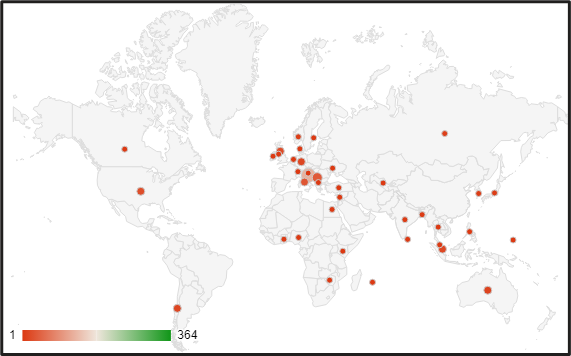IFLA’s Safer Internet Day Survey: Report in Progress
08 February 2022
IFLA’s Libraries for Children and Young Adults Section will soon publish the results of a survey into how libraries around the world are finding ways both to deliver on children’s right of access to information, while also keeping them safe.
Since 2004, Safer Internet Day has been organized annually by Insafe, a European network of Safer Internet Centres, and is now observed each year in about 200 countries. The campaign calls upon all stakeholders to join together to make the Internet a safer and better place for all, and especially for children and young people.
The Safer Internet Day mission is of great interest to those who serve children and young adults in libraries. Children enjoy a clear right of access to information, and libraries are integral to the effort to achieve this. Article 13 of the 1990 United Nations Convention on the Rights of the Child (UNCRC) state:
“The child shall have the right to freedom of expression; this right shall include freedom to seek, receive and impart information and ideas of all kinds, regardless of frontiers, either orally, in writing or in print, in the form of art, or through any other media of the child’s choice”
Yet at the same time, libraries, especially school libraries, are in the difficult position of protecting young people from access to harmful information.
We wanted to know how libraries are straddling that difficult balance of digital inclusion – of freely providing young people with access to information, while also protecting their privacy and safety online.
In order to find out how IFLA could help librarians around these issues, our Section formed the Safer Internet Day working group, first meeting at IFLA’s World Library and Information Congress in August 2019. We began with a baseline survey to find out more about: 1) who in libraries is responsible for providing safe internet access; 2) what safety initiatives or measures libraries have implemented (from restrictions including filtering, censoring, and preventing access, to providing training and education); 3) what training libraries provide to their staff; and 4) what training (or information) is provided by libraries to young people and their families.
We were pleased to get results from around the world:

While access to the Internet varies greatly around the world, survey results already show us that training and education for critical thinking and evaluation of information found online is the best way to contribute to making the Internet a safer place for children and young adults, and that there are many opportunities for IFLA to provide this type education via (for example) handbooks, infographics, best practices videos, webinars, and workshops.
A complete report on survey results is in progress and should be published during 2022. Stay tuned!
Marianne Martens, Ph.D.
Chair, Section on Libraries for Children & Young Adults
Alica Kolaric, Ph.D.
Committee Member, Section on Libraries for Children & Young Adults
Carolynn Rankin, Ph.D.
Committee Member, Section on Libraries for Children & Young Adults
Visualization by
Kristen A. Higgason
MLIS Student, Kent State University
Reference
Office of the High Commissioner, Human Rights. (1990). Convention on the Rights of the Child. Retrieved January 31, 2022.